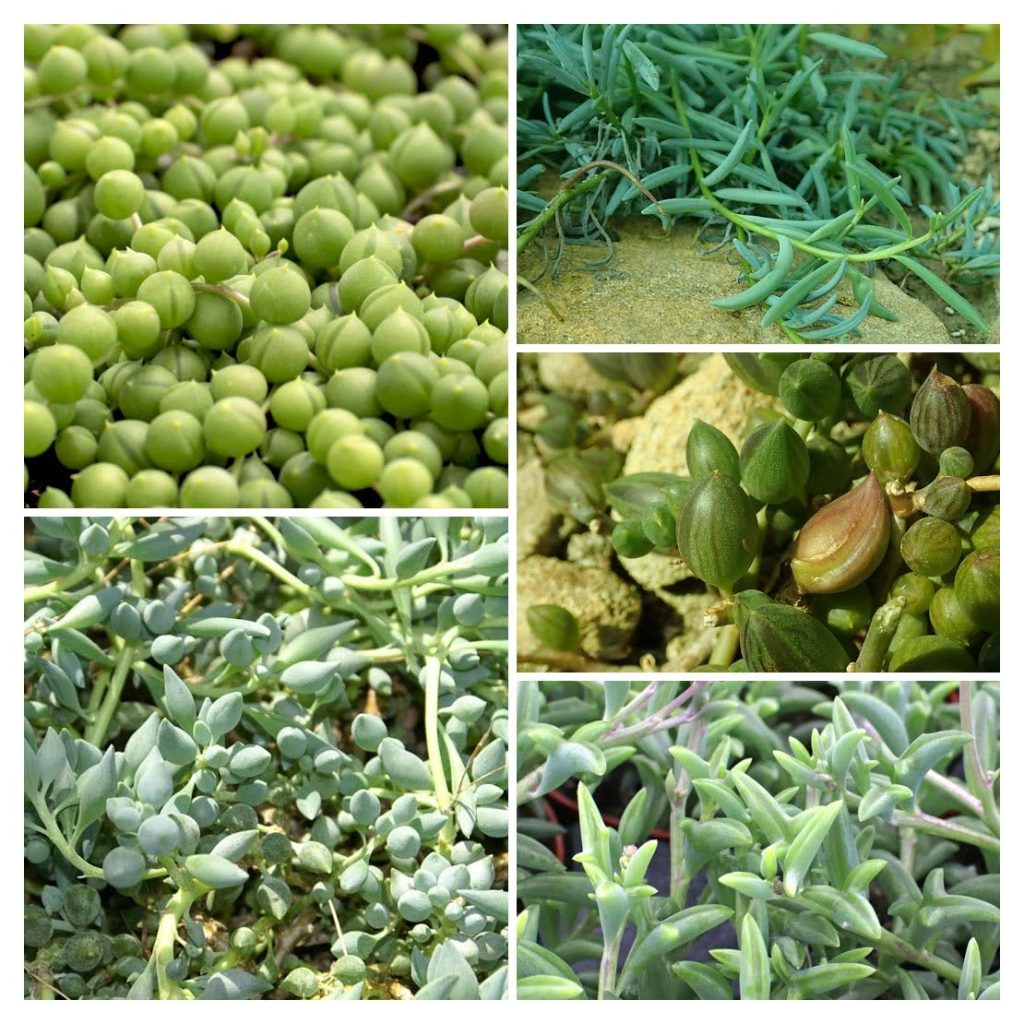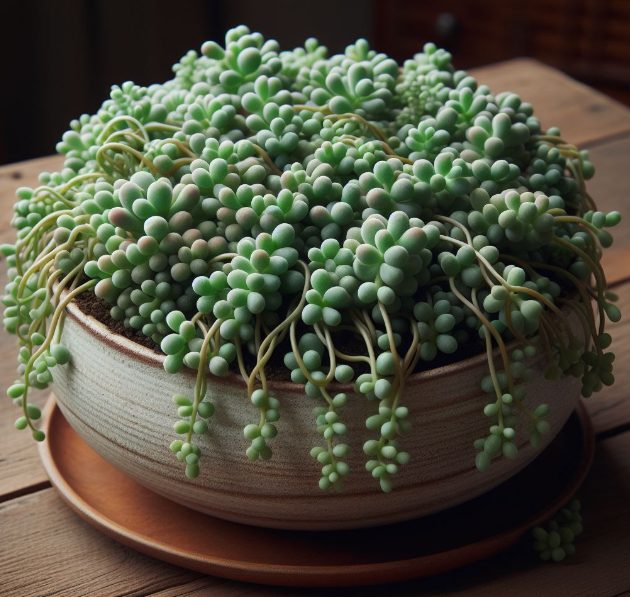
Image: Mountain Crest Gardens
It’s not a trailing plant. It’s a ground cover.
Curio rowleyanus, commonly known as String of Pearls, earns its common name from its distinctive, round leaves, which resemble small peas or pearls. They are usually only about 6 mm across.
In 1999, it received a scientific name change from Senecio rowleyanus to Curio roleyanus.
It’s cousins are also ground coverers
The following growing information also applies to its cousins:
Curio citriformis (String of Tears)
Curio hallianus (String of Beans)
Curio herreanus (String of Watermelons)
Curio × peregrinus (String of Dolphins)
Curio radicans (String of Bananas).

Pearls, Beans, Watermelons, Dolphins, Tears
As a houseplant, it is commonly sold as a trailing plant in a hanging pot, but in their natural environment they are not hanging plants at all. They are all ground covers, typically growing in thin, fast draining soil over a rocky terrain. The stems trail along the ground, sending out roots where the stems touch the ground. In a very short time this will form a thick mat. It avoids direct sunlight by growing in the shade of other plants and rocks.
Each tiny round leaf of the String or Pearls has a small tip at one end with a slender band of dark green on one side, referred to as a “window.” During the summer months, String of Pearls produces clusters of trumpet-shaped flowers, approximately 13mm in diameter, with colourful stamens. These blooms, lasting about a month, emit a pleasant aroma reminiscent of cinnamon.
The peculiar leaf shape of Curio rowleyanus serves as an adaptation to arid environments, providing water storage while minimising surface area exposed to dry air, thus reducing water loss through evaporation.
Growing these plants in a hanging pot can cause all sorts of problems
- If the stems trail over the side of the hanging pot they can easily break as they are so thin, and not designed to carry the weight of all that plant material.
- The little round leaves to drop off with very little provocation.
- They are normally sold in quite a deep pot but the roots are tiny and are unable to reach to the bottom of the pot to process all the moisture in the potting mix.
- The plant needs overhead light on the top of the pot – as a hanging pot the plant will generally only be exposed to light on the hanging strands.
You can see that these Strings of Things are being sold in a way to create the greatest fail rate because we have come to accept that what the nursery sells is the best way to grow the plant.
This is not always the case – and especially not for the String of Pearls.
You need to provide the right growing conditions if you want it to thrive.
If you can provide it with the right pot, mix, water and light conditions, you will find it is a very low-maintenance houseplant.

Image – Houseplant Jungle
Pot: rather than choosing a hanging pot, go for a shallow, broad pot, more like one you would use as a table display. If you allow the stems to trail over the sides, they won’t have far to grow before the surface of the table can take the weight of the leaves, thereby reducing the chance of stems breaking off.
Potting mix: use a specialist succulent and cactus potting mix. Anything else will be too water retentive and not airy enough which can cause root rot very quickly.
Water: It doesn’t need much watering – only water when you squeeze some of the little leaves and find them a little soft. A well-watered Curio will be firm to the touch.
Light: a few hours of morning sunlight will be of benefit, otherwise bright conditions with overhead lighting will work well.
What to do when you buy one from a nursery:
As commercially produced plants, the Curio Strings of things are sold with way too much substrate for a plant that has a comparatively shallow root system. All of that extra soil they are sitting on top of is just a reservoir to hold unusable water and promotes fungal and bacterial growth. So tip out the plant, get some good succulent mix and a shallow pot, then resettle your new plant in much happier conditions.

